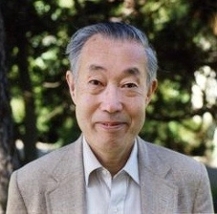
Ichiro Satake
Professor of Mathematics, Emeritus
Ichiro Satake was born on December 25, 1927, in Tokyo, Japan. In 1959, he received his Ph.D. at the University of Tokyo, with a dissertation entitled “The Gauss-Bonnet Theorem for V-Manifolds.” His advisor was Shokichi Iyanaga. Satake taught at the University of Tokyo from 1952 to 1963, and then at the University of Chicago from 1963 to 1968. He also spent time at the Institute for Advanced Study in Princeton, New Jersey, in 1967.
Satake served as professor at the University of California, Berkeley, from 1968 to 1983. After retiring from Berkeley, he continued his teaching and research in Japan, at Tohoku University (1980-1991) and later at Chuo University (1991-1998). In 2006, Professor Satake received the Mathematical Society of Japan’s Publication Prize for “Linear Algebra”, a paper written in 1958. He passed away on October 10, 2014.
Ichiro Satake worked in algebraic group theory, especially reductive groups. He introduced the Satake isomorphism (Satake correspondence) and Satake diagrams. Ever since their introduction these have been important research tools. Two of his key papers are: "Theory of Spherical Functions on Reductive Algebraic Groups over p-adic Fields" in 1963; and "Algebraic Structures of Symmetric Domains" in 1980. His work on smooth compactifications of locally symmetric varieties, for example "On the Compactification of the Siegel Space" (for what is now called Satake compactification), develops a key link between differential geometry and number theory. One interesting geometric/analytic consequence of the Satake correspondence is that certain properties of real symmetric spaces hold in their p-adic analogs.
Professor Satake's extensive research is listed in the e-math database as 71 research papers and one "reminiscences" paper. His books are: Algebraic Structures of Symmetric Domains (1980); Classification Theory of Semi-Simple Algebraic Groups (1967); and Linear Algebra (1975). In brief, Ichiro Satake was one of the iconic figures in the theory of linear algebraic groups and symmetric spaces.
Ichiro Satake had eight Ph.D. students in the United States, three in the 1960s before he came to Berkeley, and the others at Berkeley. He was a good friend and colleague, quiet, modest, and slightly formal, but always available both socially and mathematically. We missed him when he moved to Japan after retirement, and now we miss him more.
Joseph A. Wolf
2017
